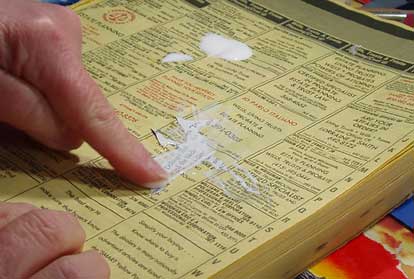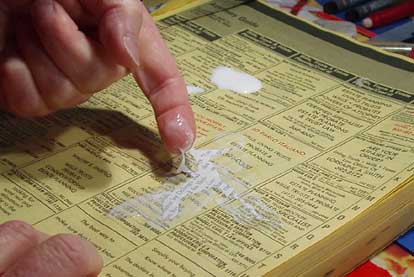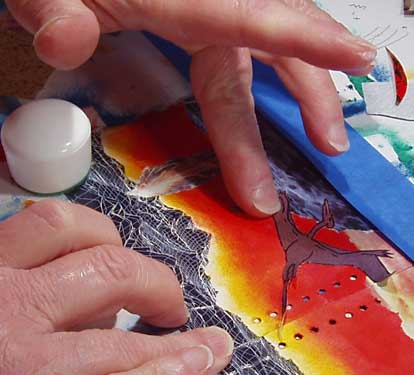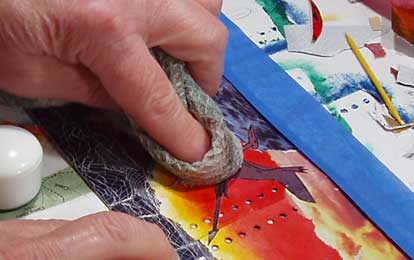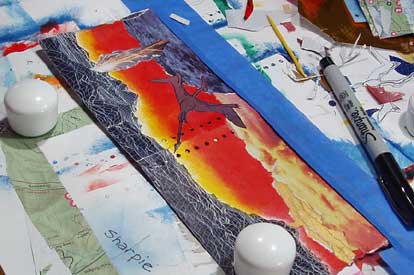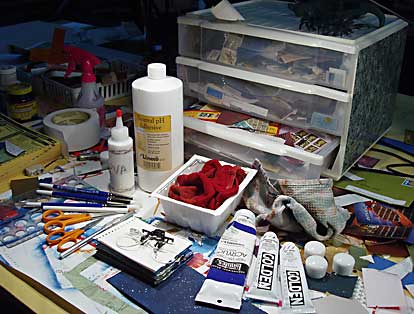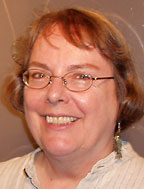The minute I saw
Teresa’s feedback to “dirty up” the collage I wasn’t happy with, I thought it was brilliant.
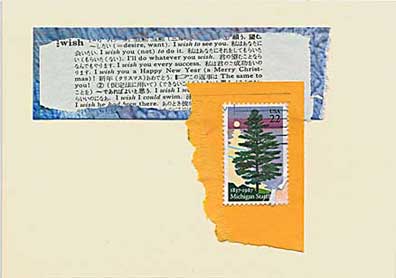
Here it is, before dirtying it up. I decided to first put a thin glaze on and scratch all over it to give it some texture and interest. Since I am using these as postcards, I flipped it over, while it was still wet on the front, and did the same to the back. The results were not what I imagined. When I flipped back over to the front again to let it dry, I realized the pressure from my brush handle, to make the scratches, had transferred ink from the phone book I use as scratch paper. So then I had a really dirty mess. I added more layers of paper, allowed it to dry, added another layer of glaze, and still thought it looked too cluttered. I peeled away parts of the collaged-on materials. I glued a part of the torn off papers back on. I added the woman and the strip of black paper I tore off the bottom of her. Another layer of acrylic glaze, more scratching.
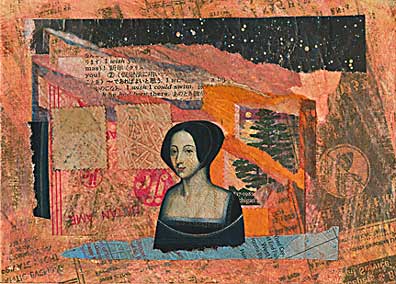
Here’s how it looks now. I think I like it. I’m not sure it’s great, but it’s getting over-worked and it’s time to go on to something else. Thank you for your feedback, Teresa, it was very helpful.
I am very philosophical about the failures that I make. Mostly I think they need to get made so I can go on to another project. I also like to experiment in ways that I don’t usually work, so there are often flubs. Sometimes I find some new thing in them that I can use elsewhere. In the case of the postcard I had forgotten about a transfer demo that I saw
Linda Tapscott do this past summer. I emailed her about my mistake. Here’s what she said:
“. . . once the Liquitex medium dries, you can go back with water (wet fingers) and rub off the paper. The ink should stick to the medium and the paper. If it isn't dry, you might get a mess, or if it gets too dry, sometimes it is hard to get the paper off. Ideally, there is a midpoint that works the best. It is hard to explain, and it will come with experience. “
When the image in the phone book transferred so clearly to my postcard I was completely surprised. I went ahead and did another transfer very quickly to see if I could repeat my “mistake.”
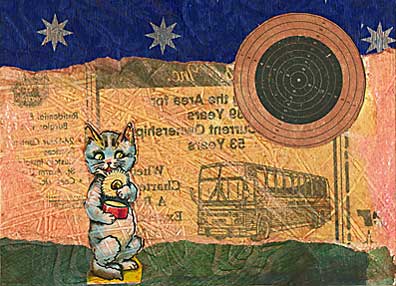
This one is clearly from the phone book. I am very impressed with how well the image transfers. The transfers I have seen that Linda did are moody and very atmospheric. I don’t remember any solid or “hard” lines in them. I believe she was using printouts from an inkjet printer.
Here’s how I did it: I brushed on a coat of acrylic mat medium. It was a fairly thin coat, enough to cover, but not thick. You can see where the stroke is thin, running diagonally through the bus. I laid the phone book page on the card immediately and rubbed it hard with a bone folder. Vigorous rubbing tears the phone book page pretty quickly, so I didn’t do it for more than 15 seconds. At that point the mat medium was already fairly dry. It was hard to peel the phone book page off. There were little bits of paper still adhered to the postcard, which I was able to rub away with my finger. The postcard is cut from Daniel Smith Murillo off-white. It has a texture and is about as heavy as lightweight museum board or heavy watercolor paper.
I want to thank everyone for the comments and emails. It’s very nice to get feedback. Feel free to contact me either way, through the comments system, or through my email. I'll add my email address to my links soon. Right now you can find my email address on my web site, on the "mailing list" page.
About the question “how do you stay creative while traveling?” Anonymous said “I carry a small sketchbook, watercolors, pencils, and a couple of those brushes with water in the handle in my purse at all times.” Is this a typo? Am I misunderstanding this? Are there brushes that hold water in their handles? They sound very useful. Please let me know.
Labels: Collage





